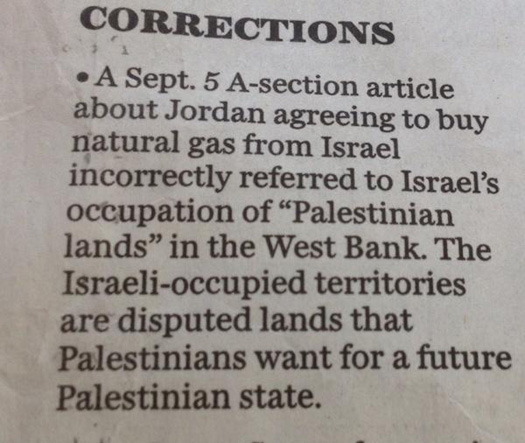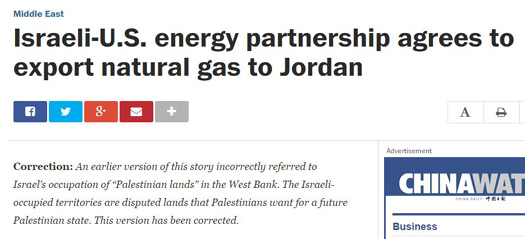Israel and Jordan signed a peace agreement in November 1994, but in recent years, relations between the two countries have been strained because of Israel’s continued occupation of Palestinian land in the West Bank [emphasis added] — a swath of territory sandwiched between the two nations — and its partial siege of the Gaza Strip, which borders Egypt.
. . . disputed territory. Its status is to be resolved by negotiations anticipated by U.N. Security Council resolutions 242 (1967) and 338 (1973), the 1995 Israeli-Palestinian interim accords, the 2003 international “road map” and related diplomatic efforts taking 242 and 338 as reference points. The co-authors of resolution 242, U.S. Under Secretary of State Eugene Rostow, U.S. ambassador to the United Nations Arthur Goldberg, and British ambassador Lord Caradon made clear at the time and subsequently that Jews and Arabs both had claims in the territories, no national sovereignty over the territories had been recognized since the end of Ottoman rule and negotiations would be necessary to resolve competing claims.The Post often has referred to the West Bank as “territory Palestinians want for a future state.” This is correct. And many Israelis also want at least some of it to be annexed to Israel. Hence the need for Israeli-Palestinian negotiations, which Secretary of State John Kerry has spent considerable effort to mediate, as The Post has reported. If the West Bank were simply Israeli-occupied Palestinian land, in particular sovereign territory belonging to another state and acquired by aggression, then Israel would be required to withdraw and no negotiations would be necessary. But since Israel is the obligatory military occupational authority, having won the territories in a war of self-defense in 1967 and retained them in a similar conflict in 1973, and competing claims remain unresolved, the West Bank is land Palestinians want for a future state, and land at least some of which many Israelis claim for Israel.



